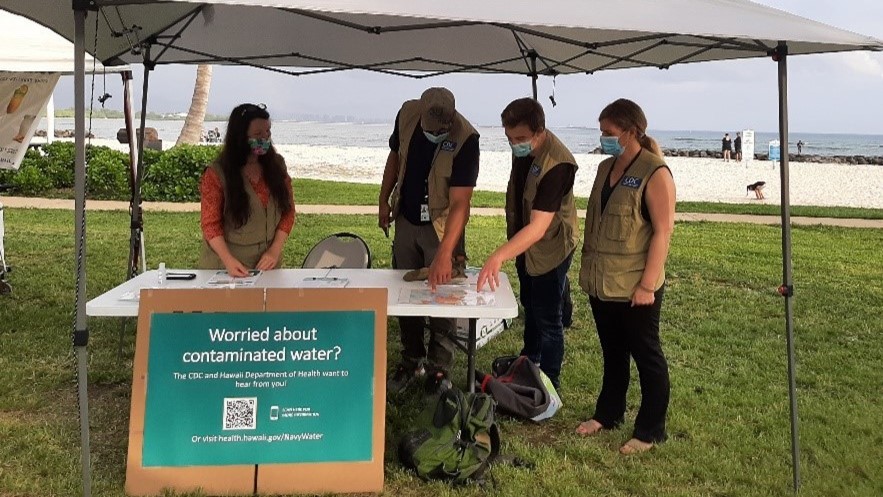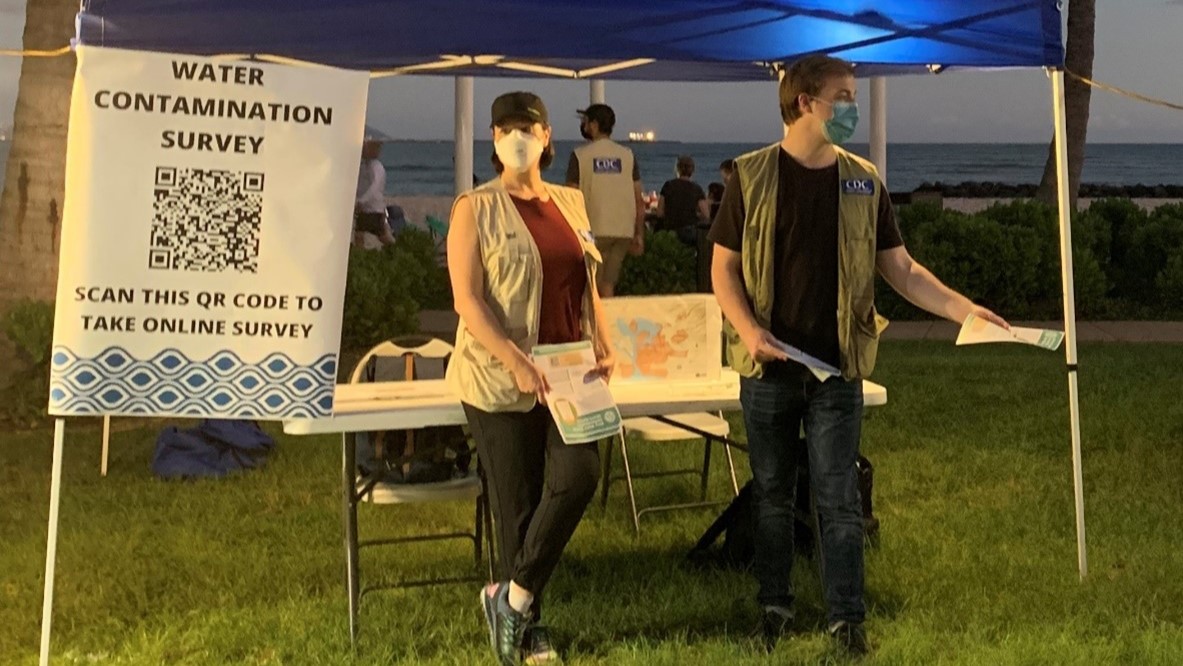Key points
- The Red Hill response began after a November 20th, 2021, jet fuel leak in Hawaii.
- CDC and the Agency for Toxic Substances and Disease Registry (ATSDR) supported the Hawaii Department of Health (HDOH) and Hawaii Poison Center.
Background

On November 20, 2021, jet fuel leaked from the Red Hill underground fuel storage facility. The leak flowed into the aquifer that supplies water to the Joint Base Pearl Harbor-Hickam Water Distribution System on Oahu, Hawaii. The water system serves approximately 9,700 civilian and military households. It also serves schools and workplaces.
The Hawaii Department of Health (HDOH) and Hawaii Poison Center began receiving hundreds of complaints from residents in the Pearl Harbor area. Residents smelled a fuel-like odor coming from their tap water. Subsequent water sampling found high levels of petroleum hydrocarbons contamination. On November 30, 2021, the HDOH issued a drinking water advisory. Between February and March 2022, the advisory was amended and lifted on a zone-by-zone basis.
CDC/ATSDR's Response Support Activities
At the request of the HDOH, CDC and ATSDR have supported the response in multiple areas. CDC and ATSDR have:
- Reviewed environmental sampling data.
- Conducted a literature review and evaluation of potential long-term health effects of petroleum exposure through drinking water.
- Assessed water system questions including treatment options and flushing risks.
- Evaluated biomonitoring needs.
- Deployed public health experts to investigate potential health impacts on affected civilian and military populations through three Assessments of Chemical Exposures (ACE) investigations.
- Started a public health assessment to evaluate whether exposures to chemical releases from the Red Hill facility since 2005 have harmed people's health.



